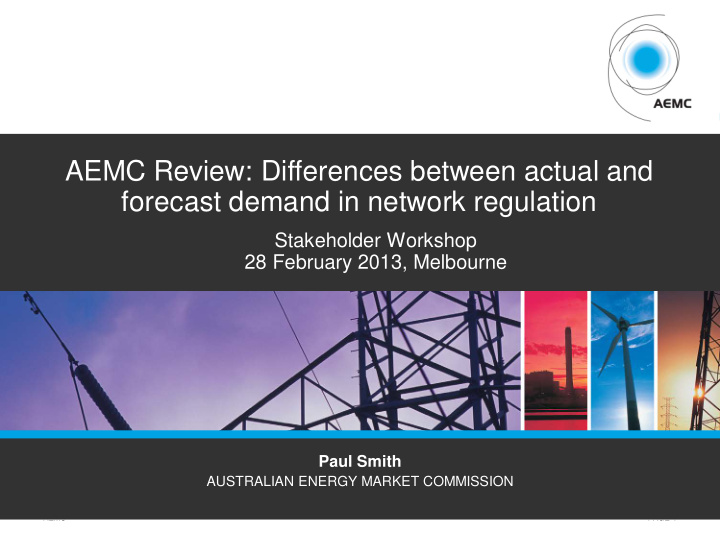



AEMC Review: Differences between actual and forecast demand in network regulation Stakeholder Workshop 28 February 2013, Melbourne Paul Smith AUSTRALIAN ENERGY MARKET COMMISSION AEMC PAGE 1
What are the key drivers of investment decisions by NSPs? • How important are region wide forecasts of peak and energy demand for investment decisions? • Are forecasts of peak and energy demand in local areas more important for investment decisions? • What do NSPs do in practice to manage uncertainties associated with demand forecasts when making investment decisions? • How do NSPs manage changes in demand forecasts over the period of planning for a project? What are the key decision points when making investment decisions? AEMC PAGE 2
Network regulation rule changes • Improved clarity and removal of ambiguities regarding the powers of the AER to review NSP’s expenditure proposals • AER can develop an ex ante capex incentive regime • AER will review ex post the efficiency of capex of all NSPs • AER has the power to disallow inefficiently incurred capex above the ex ante allowance from entering the RAB • AER will set out how it intends to use these provisions in a guideline • Intended to strengthen the incentives for NSPs to make efficient investment decisions AEMC PAGE 3
Complement existing provisions • AEMO produces an annual NTNDP that sets out a strategic national view on investment requirements • NSPs produce Annual Planning Reports providing more detailed information about local investment plans • The RIT-T and RIT-D are used to consult on and decide the best options to provide for increases in demand • Non-network options are considered as part of these assessments • Capex re-openers, pass-throughs and contingent projects provide other mechanisms in the rules to manage risk AEMC PAGE 4
Discussion questions • How do NSPs respond to changes in demand and factor them into their investment planning processes within the current framework? – What options do NSPs have to delay or bring forward capex in response to changes in demand during their regulatory control period? – Are there any differences between transmission and distribution NSPs? • How should the regulatory framework recognise the investment risks from changing demand? – What are the costs of these risks? – Does the current regulatory framework provide appropriate mechanisms to manage the risks and provide the right incentives for efficient investment? AEMC PAGE 5
AEMC PAGE 6
Recommend
More recommend